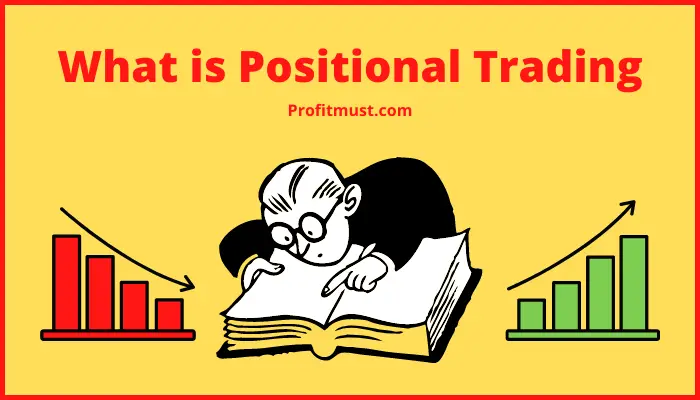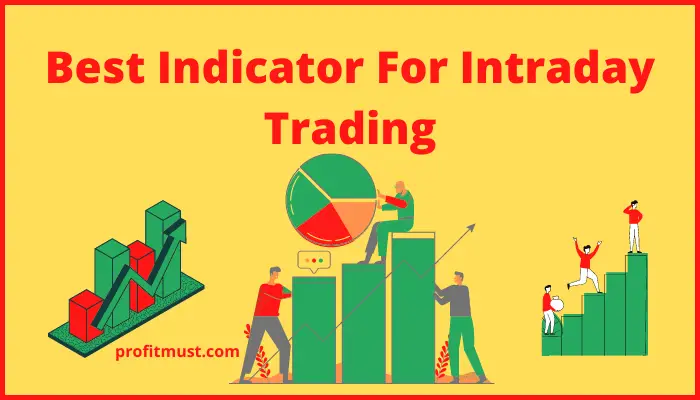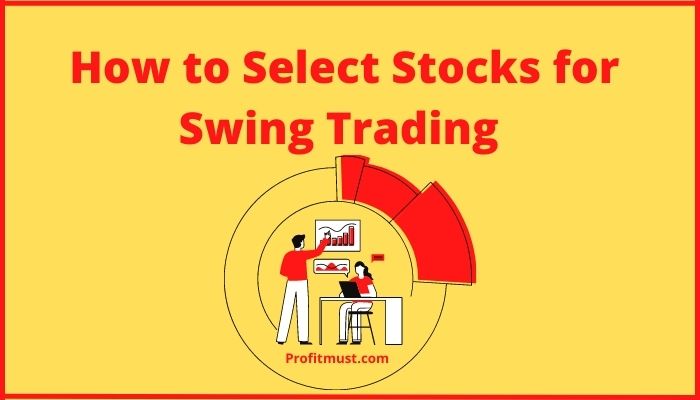So you’ve discovered about swing trading but aren’t sure where to start. The first step in developing a good swing trading strategy is to learn how to select stocks for swing trading.
Swing traders select shares with a high chance for future gain, enabling them to take a significant portion of the market. But how do they execute this? Let’s try to figure out what swing trading is all about.
Table of Contents
What is Swing Trading?
Swing trading allows you to profit from market movement over a short period of time, such as days or weeks. It, like day trading, provides traders with profit possibilities as the market moves in their direction.
Your trading approach will be built on the foundation of knowing to pick the proper shares. And, much like day trading, you’d want to choose equities with plenty of liquidity and the potential for big price and volume swings.
Let’s look at how to find stocks for swing trading with that in mind.

How to Select Stocks for Swing Trading?
Every swing trader swears by a set of broad guidelines for stock selection for swing trading. In fact, you can create and implement your own plan, but having one or two of these in your portfolio is a nice beginning of how to find stocks to swing trade.
-
Market Trends
Traders apply a rule that states that if a share is gaining in value in the ongoing market, it will keep rising if market features stay stable. You may identify the best-performing shares in a variety of ways, including reading corporate news, tracking the top stocks on the exchange, or monitoring stock indices.
-
Stock Screening
To discover chances, swing traders search for probable buy or sell signals. They use a combination of fundamental and technical analysis to discover sectors and stocks that have outperformed indices for the majority of the trading time.
They scan across stocks to find those that reflect volatility with volume and store their expectations there. This is known as screening stocks, and it entails the following steps for swing trading stock selection.
-
Liquidity
Swing traders use liquidity as a critical metric. The daily traded volume of a stock is a measure of market demand. The frequency with which a stock trades on the exchange is referred to as liquidity.
Swing trading is possible with a stock that has a high daily trading volume. Stocks with a high volume of trading have a reduced risk profile.

-
Track Record
It is a comparison of a stock’s profitability to that of other equities in the same sector. The concept is to look for the sector’s strongest stocks that have beaten sector indices. you can check the records on bse India website
-
Repetitive Trading Pattern
Swing traders seek for shares that have a market pattern that repeats itself. They believe that a consistent pattern is more reliable.
Experienced traders will wait for the share to breach the trading range before entering, and they may make multiple tiny profits while doing so by trading in the direction of the trend.
-
Clear Uptrend
Some swing traders favour equities with less volatility. They stay away from equities that are prone to severe pullbacks and frantic selling. Alternatively, they would focus on equities with minor price fluctuations and no gaps in the price line.
-
Correlation and volatility
Most swing traders will avoid stocks that move against the market trend, even if they appear to be favourable. The idea is that unstable shares should be avoided in favour of those that move in lockstep with major market indices. Learning why a stock is acting the way it is can be found by looking at its previous trends.
Volatility is another important factor. Volatility is an indicator of how much the share value will move; whether the goal and triggers are appropriate; and whether the risk parameters are sufficient for the duration the trader wishes to continue in the trade.
What are the best indicators for swing trading?
After understanding how to pick stocks for swing trading, Here are the best indicators for swing trading:
- Moving averages
- Volume
- Ichimoku cloud indicator
- Relative strength index (RSI)
- Stochastic oscillator

Risk in Swing Trading
After we’ve covered best indicators for swing trading, it’s important to remember that swing trading is riskier than day trading because the holding time is longer. As a result, you’ll need a solid technique to recognise trading possibilities as well as any warning signals.
When choosing stocks for swing trading, traders should remember that the tactics outlined in this post aren’t the only options. Every trader needs to develop a strategy that works for him.
Conclusion
Whether you want to swing trade or not, knowing how to pick stocks to swing trading can help you succeed in the stock market. You can use this learning to develop profitable trading methods and have a better understanding of stock price movement.
This is all from our side regarding How to Select Stocks for Swing Trading? Let us know your views about how to pick stocks for swing trading in the comment section.
Other Interesting blogs related to how to find stocks for swing trading:
How to choose stocks for intraday trading?
How to Find Hidden Gems in Indian Stock Market
Frequently Asked Questions About How to find stocks to swing trade?
How do you select stocks for swing trade?
Follow this steps to select stocks for swing trade: Research markets using technical analysis, determine your entry and exit strategy, Set a Stop loss, keep an eye on open positions all the time & exit it at planned point.
What is the best RSI setting for swing trading?
Swing traders can find excellent entry/exit signals in both trending and consolidating markets using the right RSI indicators. On technical charts, the default setting for RSI is 14. However, experts say that the optimal RSI timeframe is between 2 and 6.
Which time frame is best for swing trading?
A swing trader's best simple payback duration is 6 months to a year. A Swing Trader is used to holding trades for numerous days or months.
Is swing trading Easy?
For the usual retail trader, swing trading can be challenging. Professional traders have more expertise, leverage, data, and lower charges; nevertheless, the securities they can trade, the risk they can take on, and the amount of funds they have limit them.
Is swing trading safer than day trading?
Day trading and swing trading each have their own set of hazards. In general, the higher the risk, the higher the possible profit. Day trading depends on significantly smaller price changes than swing trading, thus the risk of loss is reduced.

